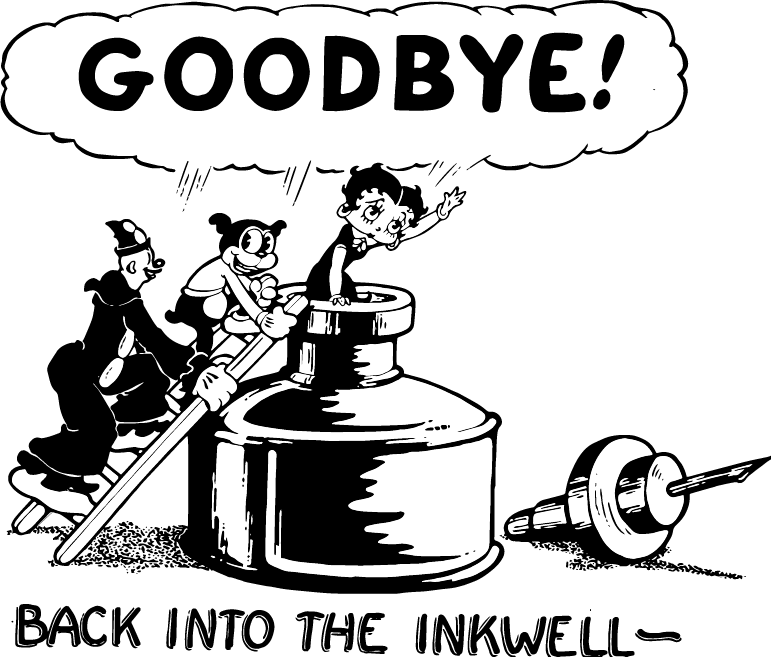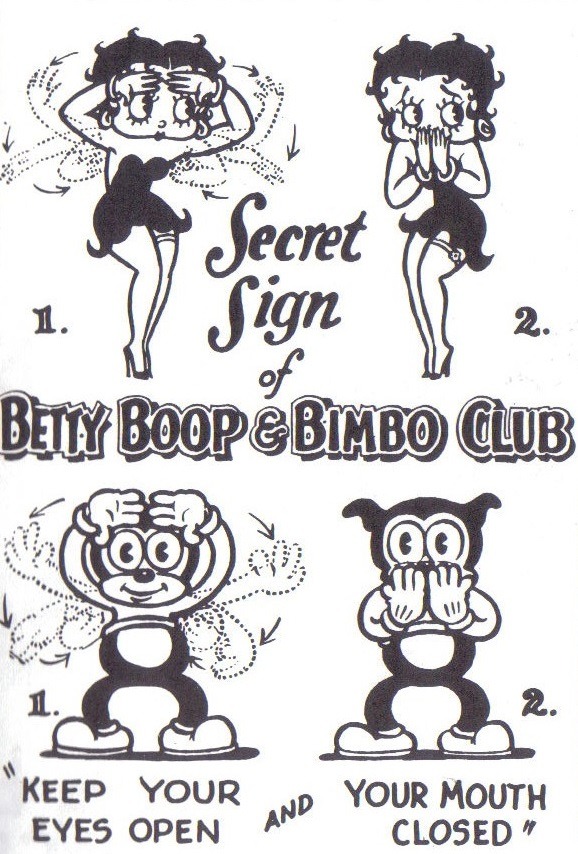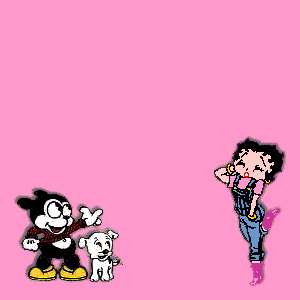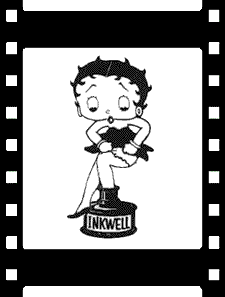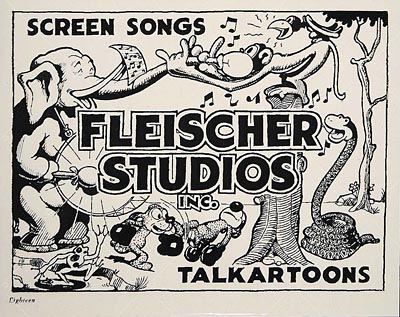
History
Max Fleischer and his brother Dave Fleischer began making cartoons in the late 1910s for Bray Studios, pioneering the technique of rotoscoping (drawing on top of live action film) to make their Out of the Inkwell series. These cartoons pitted an animated clown against live-action producer Max Fleischer in creative ways. "The Inkwell Clown" was eventually named Ko-Ko. In 1921, the Fleischers left Bray Studios and formed their own studio (originally called Inkwell Studios). Later, in 1924, animator Dick Huemer redesigned Ko-Ko in order to phase out the expensive rotoscoping process and brought in Fitz the Dog, a chaos-loving partner for Ko-Ko.
Fleischer Studios broke into sound films in 1930. Due to legal issues with their previous distributor, the studio was unable to use their previous characters. Inspired by Fitz the Dog, the studio created a new protagonist, Bimbo the Dog. At the time, "bimbo" was slang for a womanizing man (also, it was the name of Max Fleischer's son's dog). In his early cartoons, he went through many design changes (this page's favicon is Bimbo's design from Mysterious Mose!)
Betty Boop debuted in Dizzy Dishes (1930), designed by legendary animator Grim Natwick, as a French poodle cabaret singer. She was reused in subsequent cartoons as a love interest for Bimbo. Unlike the typical sanitized depiction of women in cartoons, Betty was tall and curvy, often singing jazz and embracing her sexuality. She quickly became a star, headlining cartoons before getting her own "Betty Boop Cartoons" series in 1932.
The Hays Code, which went into effect in 1934, was not kind to Betty Boop. This set of guidelines, adopted by most production and distribution associations in the US, sought to ban obscenity in film. Betty's iconic dress was banned, forcing her to cover her shoulders and adopt clothing that covered her knees. Human Betty Boop could no longer flirt with Bimbo the Dog, as it fell under "bestiality" in the new code, so Bimbo and Ko-Ko were removed entirely. This changed her world as well, as the anthropomorphic animals that inhabited it were removed along with Bimbo.
Betty's cartoons were built on themes deemed inappropriate by the Hays Code. Fleischer films pre-1934 most prominently featured sexual themes, but also had references to drugs and alcohol (Examples are the famous "St. James Infirmary" scene in "Snow White" or, earlier, the scenes at the end of "Swing You Sinners!" which could be read as depicting being high on opiates). The themes of the cartoons post-code changed to putting Betty in a motherly position to a myriad of characters, most often her small dog, Pudgy. While cute, her cartoons became drastically less interesting, and by 1939, Betty Boop cartoons were no more.
Fleischer Studios' biggest hit was their Popeye cartoons, based on E. C. Segar's comic strip. These began in 1933 and continued through Fleischer Studio's dissolution and reformation as Famous Studios (later Paramount Cartoon Studios). The last Popeye short was released in 1957. The studio also produced nine Superman cartoons in the 1940s. They're also known for their Screen Songs cartoons ("follow the bouncing ball!") and their 1940s "Color Classics" series that have appeared on countless public domain home media releases.
The bulk of this page details cartoons featuring Ko-Ko, Fitz, Bimbo, and Betty. While I like other Fleischer shorts, including every Popeye short I've seen, I've never fixated on any other ones. Please understand.
Cartoon Recs
Please note that the cartoons listed may contain content you wouldn't see as much in modern cartoons including antagonists attempting to force themselves on Betty. Also, some cartoons may include racial stereotypes which the author of this page does not condone.

Music
Here is a collection of my favorite music that was featured in Fleischer cartoons!
Load Videos in A New WindowBonus
This newsreel footage showcasing all of Betty Boop's original voice actresses.
These clips of live action Betty Boop segments featuring her voice actresses Mae Questel and Bonnie Poe as Betty.
